AUCTORES
Globalize your Research
Review | DOI: https://doi.org/10.31579/2690-8794/243
Advisor doctor and expert trainer, The National Center of Training and Development and Baghdad Medical City, Baghdad, Iraq.
*Corresponding Author: Aamir Jalal Al-Mosawi, Advisor doctor and expert trainer, The National Center of Training and Development and Baghdad Medical City, Baghdad, Iraq.
Citation: Aamir Jalal Al-Mosawi, (2024), Managing Frequently Relapsing Childhood Nephrotic Syndrome: A Novel Combination of Synacthen and Mycophenolate Mofetil ,Clinical Medical Reviews and Reports; 6(10): DOI: 10.31579/2690-8794/243
Copyright: © 2024 Aamir Jalal Al-Mosawi,, this is an open-access article distributed under the terms of the Creative Commons Attribution License, which permits unrestricted use, distribution, and reproduction in any medium, provided the original author and source are credited.
Received: 08 November 2024 | Accepted: 15 November 2024 | Published: 22 November 2024
Keywords: Frequently relapsing nephrotic syndrome; challenging cases; innovative therapeutic strategies
Childhood nephrotic syndrome is a prevalent renal disorder characterized by generalized edema due to hypoalbuminemia from heavy proteinuria. This syndrome can be classified as primary or secondary, with the majority of cases being primary. Historical perspectives on nephrotic syndrome illustrate significant advancements in understanding its pathology and treatment, beginning with early descriptions in the 15th century and evolving through the introduction of terms like "nephrosis."
Current management primarily relies on corticosteroids, but issues such as frequent relapses and steroid dependency necessitate alternative therapies. Recent approaches include the use of levamisole and mycophenolate mofetil, alongside the resurgence of intramuscular ACTH (synacthen) as a treatment option.
This article presents a case study of a boy with frequently relapsing steroid-dependent nephrotic syndrome, successfully treated with a novel combination of intramuscular synacthen and mycophenolate mofetil.
This regimen effectively reduced the required dosage of steroids while minimizing associated adverse effects, particularly psychiatric symptoms. The findings underscore the potential for innovative therapeutic strategies in managing challenging cases of childhood nephrotic syndrome.
Childhood nephrotic syndrome is primarily characterized by generalized edema due to hypoalbuminemia from significant proteinuria. Most cases are primary, with historical descriptions dating back to the 15th century. Key advancements in understanding and treating the syndrome include the introduction of terms like "nephrosis" by Friedrich von Müller and the distinction between inflammatory and non-inflammatory renal diseases by Franz Volhard and Theodor Fahr [1-18].
In 1484, Cornelus Roelans from Belgium likely described one of the first cases of nephrotic syndrome, noting whole-body swelling in a child [1]. In 1722, Theodore Zwinger from Basel provided a detailed account of childhood nephrotic syndrome, highlighting reduced urine output and attributing this to obstruction of the renal tubules [2].
In 1827, Richard Bright (Figure 1A) suggested that generalized edema combined with proteinuria is indicative of renal disease [3].

Figure-1A: Richard Bright (September 28, 1789-December 16, 1858) was an English physician
John Bostock (Figure 1B) observed a correlation between high urinary protein excretion and low serum protein levels [4].

Figure-1B: John Bostock, Jr. (June 29, 1773-August 6, 1846), an English physician and scientist
In 1846, George Johnson (Figure 1C) posited that the renal disease identified by Bright was a localized manifestation of a broader constitutional disorder. He also noted that not all cases of Richard Bright included albuminuria, which represents what Rayer called “Albuminous nephritis”, hinting at the heterogeneous nature of Bright's disease [5].
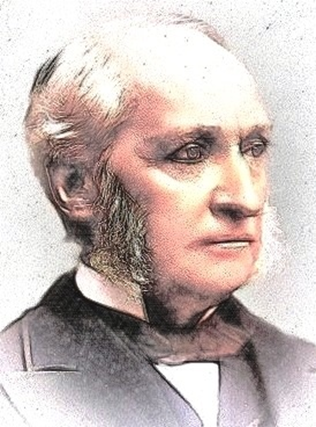
Figure-1C: George Johnson (November, 29 1818-June, 3 1896) was an English physician
In 1905, Friedrich von Müller (Figure 1D) introduced the term “nephrosis” to describe the histological changes in renal tubules which were thought to be degenerative, distinguishing these non-inflammatory disorders from “parenchymatous nephritis” which suggests an exudative and inflammatory disorder. Later, nephrosis has been used to describe the clinical condition which has been increasingly known nephrotic syndrome [6].
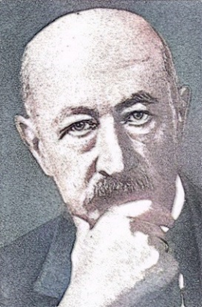
Figure-1D:Friedrich von Müller (September 17, 1858-November 18. 1941), a German physician
In 1914, Franz Volhard (Figure 1E) and Theodor Fahr (Figure 1F) reaffirmed the distinction between nephroses, a non-inflammatory disease and inflammatory nephritides in their classification of renal disorders [7].

Figure-1E: Franz Volhard (May 2, 1872-May 24, 1950), a German physician

Figure-1F: Karl Theodor Fahr (October 3, 1877-October 29, 1945), a German pathologist
Childhood nephrotic syndrome is primarily steroid-responsive, often characterized by frequent relapses and steroid dependence. Various steroids and synthetic adrenocorticotropic hormone (ACTH) analogs have been utilized since the 1950s [8-16].
Henry Lewis Barnett (Figure 1G) and his team were among the first to explore ACTH and cortisone treatment for nephrotic syndrome in 1950 [8].

Figure-1G: Henry Lewis Barnett (1914-2001), An American pioneer of pediatric nephrology
Gavin Arneil and Wilson reported the effective use of cortisone in 1952 and detailed treatment outcomes for 16 patients in 1953, emphasizing its role in inducing diuresis [10, 11].
By 1954, Lauson et al. noted the positive impact of ACTH on glomerular permeability in childhood nephrotic syndrome.
Gavin Arneil (Figure 1H) was likely the first to report the use of prednisolone for treating nephrotic syndrome in 1956 [13].
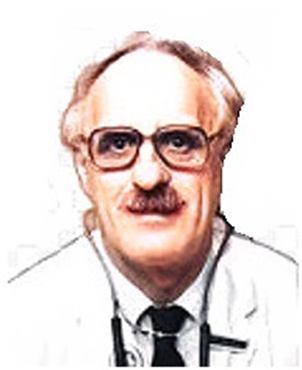
Figure-1H: Gavin Cranston Arneil (March 7, 1923-January 21, 2018), a Scottish pioneer of pediatric nephrologist from Glasgow
In 1968, John Stewart Cameron (Figure 1I) demonstrated that the minimal change lesion, the predominant histopathological type in childhood nephrotic syndrome, is the only type that consistently responds to corticosteroid treatment within eight weeks [17].

Figure-1I: John Stewart Cameron (July 5, 1934-July 30, 2023), a British nephrologist
Chlorambucil and cyclophosphamide began to be used in the 1970s for challenging cases with significant steroid side effects [19-24].
The 1979 international study of kidney disease involved 54 children with frequently relapsing nephrotic syndrome, revealing that both treatment regimens were inadequate in preventing relapses [25].
Treatment strategies have evolved over the decades, with steroids being the primary therapy. However, issues such as frequent relapses and steroid dependency have led to the exploration of alternative treatments like levamisole and mycophenolate mofetil. Notably, intramuscular ACTH (synacthen) has gained attention for its beneficial effects on glomerular permeability and potential to alleviate psychiatric side effects associated with high-dose steroids.
In 1980, Tanphaichitr et al. highlighted the potential role of T-cell lymphocyte dysfunction in minimal change nephrotic syndrome, employing levamisole, an anthelmintic having immune stimulant property to treat seven children with minimal change nephrotic syndrome during relapses with positive outcomes.
Levamisole was used in a dose of 1.5 to 3.9 mg kg biweekly for one to six months. After Treatment was associated with a complete remission without the occurrence of side effects [26].
In 1984, Patrick Niaudet (Figure 1J) from Paris and his research team reported successful levamisole treatment in children with frequently relapsing nephrotic syndrome, leading to reduced corticosteroid doses without significant side effects [27].

Figure-1J: Patrick Niaudet, a pediatric nephrologist from France
They described the treatment of 30 cases of childhood frequently relapsing nephrotic syndrome with levamisole (2.5 mg/kg twice weekly) for a mean period of 9.9 months. Treatment in sixteen patients enabled marked reduction of corticosteroids without experiencing a relapse. However, levamisole was not effective in 14 patients. Seven patients who responded to levamisole therapy, experienced reduction of neutrophils to below 4×109/L. Three patients experienced transient granulocytopenia.
Therefore, Niaudet and his research team suggested that levamisole can be useful option in frequently relapsing nephrotic syndrome, and with minimal side effects [27].
The British Association for Pediatric Nephrology supported levamisole, an immunostimulant agent as an alternative therapy in 1991, confirming its effectiveness in maintaining steroid-free remission.
They reported the treatment of 31 cases of frequently relapsing and dependent steroid nephrotic syndrome with levamisole (2.5 mg/kg on alternate days), while 30 patients received placebo for a maximum of 112 days. In both groups, prednisolone was progressively decreased and was discontinued by 56 days. 14 patients who received levamisole and only four patients who received placebo remained in remission at 112 days (log rank analysis p less than 0.01).The British Association for Pediatric Nephrology considered levamisole to be effective in maintaining a steroid-free remission, and it was not associated with important side effects [28].
Capodicasa et al. in 1986 and Brodehl in 1991 emphasized the possible occurrence of nephrotoxicity during the use of cyclosporine in the treatment of frequently relapsing nephrotic syndrome as evidenced by serum creatinine monitoring [29, 30].
Concerns regarding nephrotoxicity with cyclosporine prompted increased recommendations for levamisole in difficult cases of primary childhood nephrotic syndrome [31-39].
In 1998, Briggs from the United States suggested mycophenolate mofetil as a beneficial steroid-sparing agent for challenging cases of nephrotic syndrome. Mycophenolate mofetil can be used instead of cyclosporine in difficult cases of childhood nephrotic syndrome caused by minimal change disease and possibly by other glomerular disease [40].
Patients and methods
We utilized existing evidence to enhance the management of challenging childhood conditions such as frequently relapsing, steroid-dependent, and steroid-resistant nephrotic syndrome. We previously treated a boy (Figure 2A) with frequently relapsing steroid nephrotic syndrome who faced significant steroid toxicity, resulting in stunted growth due to prolonged high doses of prednisolone (2 mg/kg daily). His treatment involved an alternate-day regimen of levamisole combined with mycophenolate mofetil, significantly reducing the prednisolone dosage and its adverse effects.
This paper describes the use of a new therapeutic approach in the treatment of a second boy who had frequently relapsing nephrotic syndrome that didn’t respond to cyclosporine.
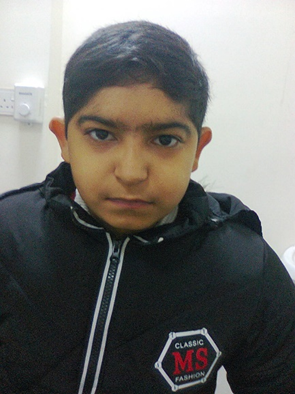
Figure 2A: A boy with frequently relapsing steroid nephrotic syndrome who faced significant steroid toxicity, resulting in stunted growth
The boy first presented with nephrotic syndrome on August 20, 2020, at approximately seven years of age. By July 20, 2024, he was experiencing his seventh or eighth episode and was on oral prednisolone (10 mg daily) and cyclosporine (100 mg daily). His previous relapses had required high-dose prednisone, diuretics, and, at times, intravenous albumin.
Cyclosporine treatment was started before about 14 months. Previous relapses were treated with large dose oral prednisone and diuretics, and sometime he was receiving intravenous infusion of albumin.
His father noted that the use of high-dose prednisone during relapses correlated with depressive symptoms that did not fully resolve with dose reductions.
On July 20, 2024, lab tests revealed normal renal function: serum creatinine at 0.4 mg/dL and blood urea at 25.5 mg/dL, with total serum protein at 4.2 g/dL and serum albumin at 1.5 g/dL. Urine analysis showed 200 mg/dL albumin (normal levels are <2>
The patient was not treated with the traditional large daily dose of prednisone, but he was treated with low-dose prednisolone, intramuscular synacthen (Tetracosactide, 1 mg weekly [Tetracosactride, a synthetic peptide with an amino acid sequence identical to the first 24 amino acids of corticotrophin]), and mycophenolate mofetil, starting at 1000 mg in two divided doses and increasing to 1500 mg daily after one week when urine showed 100 mg/dL albumin.
Prior to starting mycophenolate, complete blood studies indicated normal levels: Hemoglobin at 14.2 g/dL, WBC at 7.2 × 10^9/L, lymphocytes at 3.7 × 10^9/L (47.2%), and platelets at 352 × 10^9/L.
By August 3, 2024, blood tests showed Hemoglobin at 13.4 g/dL, WBC at 7.9 × 10^9/L, lymphocytes at 3.6 × 10^9/L (44.0%), and platelets at 332 × 10^9/L.
On August 17, 2024, the boy has received 5 intramuscular synacthen urine exam showed only trace amount of albumin. Intramuscular synacthen was stopped. Total serum protein was 7.0 g / dL and serum albumin was 4.2 g / d. Figure 2B illustrates the boy on October 12, 2024, with urine tests showing no detectable albumin.
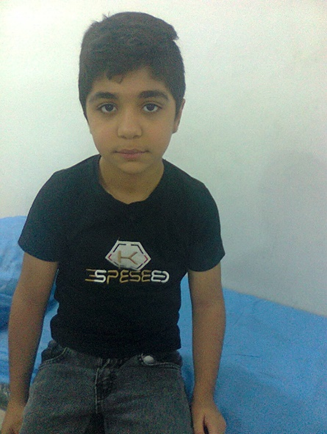
Figure 2B: The boy on October 12, 2024, with urine tests showing no detectable albumin
The beneficial effects of ACTH on glomerular permeability in childhood nephrotic syndrome were first reported in 1954 by Lauson et al. Subsequent studies (2004, 2010) indicated that ACTH could improve various nephritic syndromes by protecting podocytes from damage [42-47].
In 2004, Berg and Arnadottir reported that ACTH therapy was associated with improvement in a variety nephritic syndrome [42].
In 2010, the work of Gong and Dworkin suggested that ACTH has a protective effect on podocytes as it can reduce foot-process effacement, podocyte apoptosis, and decrease the decline in glomerular expression of podocyte markers, including nephrin, vimentin, and podocin. Therefore it can have a beneficial effect when used in different types of glomerular disorders [44].
In 2011, Rujun Gong from the United States emphasized the renaissance of corticotropin treatment in nephrotic nephropathies [45].
Chlorambucil and cyclophosphamide and have used as early as the 1970s in difficult cases associated with significant steroid side effects [19-24].
In 1979, Wiggelinkhuizen and colleagues reported the treatment of thirteen childhood cases of frequently relapsing nephrotic syndrome with chlorambucil (Leukeran), a cytotoxic drug in a dose of 0.2 mg/kg/day for eight weeks. Treatment was associated with remission in 11 patients for an average of 31 months. No side-effects of therapy were observed in this study, but several grave complications of high-dosage therapy have been reported in the recent literature [23].
In 1980, Williams et al. reported the treatment of 59 childhood cases of frequently relapsing, steroid dependent and resistant idiopathic nephrotic syndrome with chlorambucil and prednisone for 5 to 15 weeks. 95% of the patients experienced remission at one year and 85% at 4 years. All patients except two experienced remissions lasting longer than steroid-induced remissions. Only eight other patients experienced one or more relapses after treatment [24].
The boy in this report was experiencing steroid-induced behavioral and psychiatric abnormalities mostly in the form of depressive mood.
In 2013, Youssef et al from Egypt reported a study which included thirty children with steroid sensitive nephrotic syndrome who were at remission or were receiving prednisolone in a low dose and experienced relapse. The study showed that prednisolone treatment in high doses was associated psychiatric abnormalities including anxiety and depression [41].
Several studies supported the potential of intramuscular synacthen to have a beneficial effect in childhood nephrotic syndrome [42-47].
Our current study highlights intramuscular synacthen's role in mitigating the psychiatric symptoms associated with high doses of prednisolone.
In 1896, Bartolomeo Gosio (Figure-3) reported the isolation of mycophenolic acid, an antibacterial from the mould Penicillium brevicompactum. The novel compound has an antibacterial property against anthrax bacterium. However, mycophenolic mofetil was not introduced into clinical use.
In 1912, Alsberg and O.M. Black from the United States also reported its isolation.
Mycophenolate mofetil, derived from mycophenolic acid, has been established as a safe and effective treatment for preventing immune rejection in organ transplants [48-50]. It has also shown promise in managing childhood nephrotic syndrome [52-67]
Mycophenolate mofetil (Cellcept), a derivative of mycophenolic acid, and its prodrug was introduced by Anthony Allison a geneticist from South African and his wife Elsie M Eugui during the early 1970s, and has been used as an antimetabolite immunosuppressive agent that work by inhibiting purine synthesis.
Mycophenolic mofetil has been considered safe and useful in preventing the immune rejection of allografts since the early 1990s. Therefore, it has been increasingly used as an anti-rejection agent in organ transplants [48-50].

Figure-3: Bartolomeo Gosio (17 March17, 1863-April 13, 1944), an Italian medical scientist
In 1996, Confavreux and Moreau from France emphasized the available evidence suggesting that mycophenolate mofetil has a good safety profile and lacks mutagenic effect and chromosome breakage [51].
During the previous decades, mycophenolate mofetil has been used extensively with a beneficial effect in childhood nephrotic syndrome [52-68].
In our case, the combination of intramuscular synacthen and oral mycophenolate resulted in successful treatment without significant side effects, effectively minimizing steroid toxicity, particularly concerning psychiatric manifestations.
Childhood nephrotic syndrome remains a complex condition requiring a multifaceted approach to management, particularly in cases that are frequently relapsing or steroid-dependent. The historical evolution of understanding this disorder underscores the significance of ongoing research and innovation in treatment strategies.
The successful use of a combination therapy involving intramuscular synacthen and mycophenolate mofetil in the presented case demonstrates the potential for alternatives to traditional corticosteroid treatments. This approach not only alleviated the nephrotic syndrome symptoms but also mitigated the psychiatric side effects commonly associated with high-dose steroid therapy.
Future research should continue to explore and validate such therapeutic combinations to optimize outcomes for children with challenging nephrotic syndrome, aiming for effective management with minimal adverse effects.
Acknowledgement
The author has the copyrights of all the sketches (Figures) included in this paper.
Conflict of interest: None.
Clearly Auctoresonline and particularly Psychology and Mental Health Care Journal is dedicated to improving health care services for individuals and populations. The editorial boards' ability to efficiently recognize and share the global importance of health literacy with a variety of stakeholders. Auctoresonline publishing platform can be used to facilitate of optimal client-based services and should be added to health care professionals' repertoire of evidence-based health care resources.

Journal of Clinical Cardiology and Cardiovascular Intervention The submission and review process was adequate. However I think that the publication total value should have been enlightened in early fases. Thank you for all.

Journal of Women Health Care and Issues By the present mail, I want to say thank to you and tour colleagues for facilitating my published article. Specially thank you for the peer review process, support from the editorial office. I appreciate positively the quality of your journal.
Journal of Clinical Research and Reports I would be very delighted to submit my testimonial regarding the reviewer board and the editorial office. The reviewer board were accurate and helpful regarding any modifications for my manuscript. And the editorial office were very helpful and supportive in contacting and monitoring with any update and offering help. It was my pleasure to contribute with your promising Journal and I am looking forward for more collaboration.

We would like to thank the Journal of Thoracic Disease and Cardiothoracic Surgery because of the services they provided us for our articles. The peer-review process was done in a very excellent time manner, and the opinions of the reviewers helped us to improve our manuscript further. The editorial office had an outstanding correspondence with us and guided us in many ways. During a hard time of the pandemic that is affecting every one of us tremendously, the editorial office helped us make everything easier for publishing scientific work. Hope for a more scientific relationship with your Journal.

The peer-review process which consisted high quality queries on the paper. I did answer six reviewers’ questions and comments before the paper was accepted. The support from the editorial office is excellent.

Journal of Neuroscience and Neurological Surgery. I had the experience of publishing a research article recently. The whole process was simple from submission to publication. The reviewers made specific and valuable recommendations and corrections that improved the quality of my publication. I strongly recommend this Journal.

Dr. Katarzyna Byczkowska My testimonial covering: "The peer review process is quick and effective. The support from the editorial office is very professional and friendly. Quality of the Clinical Cardiology and Cardiovascular Interventions is scientific and publishes ground-breaking research on cardiology that is useful for other professionals in the field.

Thank you most sincerely, with regard to the support you have given in relation to the reviewing process and the processing of my article entitled "Large Cell Neuroendocrine Carcinoma of The Prostate Gland: A Review and Update" for publication in your esteemed Journal, Journal of Cancer Research and Cellular Therapeutics". The editorial team has been very supportive.

Testimony of Journal of Clinical Otorhinolaryngology: work with your Reviews has been a educational and constructive experience. The editorial office were very helpful and supportive. It was a pleasure to contribute to your Journal.

Dr. Bernard Terkimbi Utoo, I am happy to publish my scientific work in Journal of Women Health Care and Issues (JWHCI). The manuscript submission was seamless and peer review process was top notch. I was amazed that 4 reviewers worked on the manuscript which made it a highly technical, standard and excellent quality paper. I appreciate the format and consideration for the APC as well as the speed of publication. It is my pleasure to continue with this scientific relationship with the esteem JWHCI.

This is an acknowledgment for peer reviewers, editorial board of Journal of Clinical Research and Reports. They show a lot of consideration for us as publishers for our research article “Evaluation of the different factors associated with side effects of COVID-19 vaccination on medical students, Mutah university, Al-Karak, Jordan”, in a very professional and easy way. This journal is one of outstanding medical journal.
Dear Hao Jiang, to Journal of Nutrition and Food Processing We greatly appreciate the efficient, professional and rapid processing of our paper by your team. If there is anything else we should do, please do not hesitate to let us know. On behalf of my co-authors, we would like to express our great appreciation to editor and reviewers.

As an author who has recently published in the journal "Brain and Neurological Disorders". I am delighted to provide a testimonial on the peer review process, editorial office support, and the overall quality of the journal. The peer review process at Brain and Neurological Disorders is rigorous and meticulous, ensuring that only high-quality, evidence-based research is published. The reviewers are experts in their fields, and their comments and suggestions were constructive and helped improve the quality of my manuscript. The review process was timely and efficient, with clear communication from the editorial office at each stage. The support from the editorial office was exceptional throughout the entire process. The editorial staff was responsive, professional, and always willing to help. They provided valuable guidance on formatting, structure, and ethical considerations, making the submission process seamless. Moreover, they kept me informed about the status of my manuscript and provided timely updates, which made the process less stressful. The journal Brain and Neurological Disorders is of the highest quality, with a strong focus on publishing cutting-edge research in the field of neurology. The articles published in this journal are well-researched, rigorously peer-reviewed, and written by experts in the field. The journal maintains high standards, ensuring that readers are provided with the most up-to-date and reliable information on brain and neurological disorders. In conclusion, I had a wonderful experience publishing in Brain and Neurological Disorders. The peer review process was thorough, the editorial office provided exceptional support, and the journal's quality is second to none. I would highly recommend this journal to any researcher working in the field of neurology and brain disorders.

Dear Agrippa Hilda, Journal of Neuroscience and Neurological Surgery, Editorial Coordinator, I trust this message finds you well. I want to extend my appreciation for considering my article for publication in your esteemed journal. I am pleased to provide a testimonial regarding the peer review process and the support received from your editorial office. The peer review process for my paper was carried out in a highly professional and thorough manner. The feedback and comments provided by the authors were constructive and very useful in improving the quality of the manuscript. This rigorous assessment process undoubtedly contributes to the high standards maintained by your journal.

International Journal of Clinical Case Reports and Reviews. I strongly recommend to consider submitting your work to this high-quality journal. The support and availability of the Editorial staff is outstanding and the review process was both efficient and rigorous.

Thank you very much for publishing my Research Article titled “Comparing Treatment Outcome Of Allergic Rhinitis Patients After Using Fluticasone Nasal Spray And Nasal Douching" in the Journal of Clinical Otorhinolaryngology. As Medical Professionals we are immensely benefited from study of various informative Articles and Papers published in this high quality Journal. I look forward to enriching my knowledge by regular study of the Journal and contribute my future work in the field of ENT through the Journal for use by the medical fraternity. The support from the Editorial office was excellent and very prompt. I also welcome the comments received from the readers of my Research Article.

Dear Erica Kelsey, Editorial Coordinator of Cancer Research and Cellular Therapeutics Our team is very satisfied with the processing of our paper by your journal. That was fast, efficient, rigorous, but without unnecessary complications. We appreciated the very short time between the submission of the paper and its publication on line on your site.

I am very glad to say that the peer review process is very successful and fast and support from the Editorial Office. Therefore, I would like to continue our scientific relationship for a long time. And I especially thank you for your kindly attention towards my article. Have a good day!

"We recently published an article entitled “Influence of beta-Cyclodextrins upon the Degradation of Carbofuran Derivatives under Alkaline Conditions" in the Journal of “Pesticides and Biofertilizers” to show that the cyclodextrins protect the carbamates increasing their half-life time in the presence of basic conditions This will be very helpful to understand carbofuran behaviour in the analytical, agro-environmental and food areas. We greatly appreciated the interaction with the editor and the editorial team; we were particularly well accompanied during the course of the revision process, since all various steps towards publication were short and without delay".

I would like to express my gratitude towards you process of article review and submission. I found this to be very fair and expedient. Your follow up has been excellent. I have many publications in national and international journal and your process has been one of the best so far. Keep up the great work.

We are grateful for this opportunity to provide a glowing recommendation to the Journal of Psychiatry and Psychotherapy. We found that the editorial team were very supportive, helpful, kept us abreast of timelines and over all very professional in nature. The peer review process was rigorous, efficient and constructive that really enhanced our article submission. The experience with this journal remains one of our best ever and we look forward to providing future submissions in the near future.

I am very pleased to serve as EBM of the journal, I hope many years of my experience in stem cells can help the journal from one way or another. As we know, stem cells hold great potential for regenerative medicine, which are mostly used to promote the repair response of diseased, dysfunctional or injured tissue using stem cells or their derivatives. I think Stem Cell Research and Therapeutics International is a great platform to publish and share the understanding towards the biology and translational or clinical application of stem cells.

I would like to give my testimony in the support I have got by the peer review process and to support the editorial office where they were of asset to support young author like me to be encouraged to publish their work in your respected journal and globalize and share knowledge across the globe. I really give my great gratitude to your journal and the peer review including the editorial office.

I am delighted to publish our manuscript entitled "A Perspective on Cocaine Induced Stroke - Its Mechanisms and Management" in the Journal of Neuroscience and Neurological Surgery. The peer review process, support from the editorial office, and quality of the journal are excellent. The manuscripts published are of high quality and of excellent scientific value. I recommend this journal very much to colleagues.

Dr.Tania Muñoz, My experience as researcher and author of a review article in The Journal Clinical Cardiology and Interventions has been very enriching and stimulating. The editorial team is excellent, performs its work with absolute responsibility and delivery. They are proactive, dynamic and receptive to all proposals. Supporting at all times the vast universe of authors who choose them as an option for publication. The team of review specialists, members of the editorial board, are brilliant professionals, with remarkable performance in medical research and scientific methodology. Together they form a frontline team that consolidates the JCCI as a magnificent option for the publication and review of high-level medical articles and broad collective interest. I am honored to be able to share my review article and open to receive all your comments.

“The peer review process of JPMHC is quick and effective. Authors are benefited by good and professional reviewers with huge experience in the field of psychology and mental health. The support from the editorial office is very professional. People to contact to are friendly and happy to help and assist any query authors might have. Quality of the Journal is scientific and publishes ground-breaking research on mental health that is useful for other professionals in the field”.

Dear editorial department: On behalf of our team, I hereby certify the reliability and superiority of the International Journal of Clinical Case Reports and Reviews in the peer review process, editorial support, and journal quality. Firstly, the peer review process of the International Journal of Clinical Case Reports and Reviews is rigorous, fair, transparent, fast, and of high quality. The editorial department invites experts from relevant fields as anonymous reviewers to review all submitted manuscripts. These experts have rich academic backgrounds and experience, and can accurately evaluate the academic quality, originality, and suitability of manuscripts. The editorial department is committed to ensuring the rigor of the peer review process, while also making every effort to ensure a fast review cycle to meet the needs of authors and the academic community. Secondly, the editorial team of the International Journal of Clinical Case Reports and Reviews is composed of a group of senior scholars and professionals with rich experience and professional knowledge in related fields. The editorial department is committed to assisting authors in improving their manuscripts, ensuring their academic accuracy, clarity, and completeness. Editors actively collaborate with authors, providing useful suggestions and feedback to promote the improvement and development of the manuscript. We believe that the support of the editorial department is one of the key factors in ensuring the quality of the journal. Finally, the International Journal of Clinical Case Reports and Reviews is renowned for its high- quality articles and strict academic standards. The editorial department is committed to publishing innovative and academically valuable research results to promote the development and progress of related fields. The International Journal of Clinical Case Reports and Reviews is reasonably priced and ensures excellent service and quality ratio, allowing authors to obtain high-level academic publishing opportunities in an affordable manner. I hereby solemnly declare that the International Journal of Clinical Case Reports and Reviews has a high level of credibility and superiority in terms of peer review process, editorial support, reasonable fees, and journal quality. Sincerely, Rui Tao.

Clinical Cardiology and Cardiovascular Interventions I testity the covering of the peer review process, support from the editorial office, and quality of the journal.

Clinical Cardiology and Cardiovascular Interventions, we deeply appreciate the interest shown in our work and its publication. It has been a true pleasure to collaborate with you. The peer review process, as well as the support provided by the editorial office, have been exceptional, and the quality of the journal is very high, which was a determining factor in our decision to publish with you.
The peer reviewers process is quick and effective, the supports from editorial office is excellent, the quality of journal is high. I would like to collabroate with Internatioanl journal of Clinical Case Reports and Reviews journal clinically in the future time.

Clinical Cardiology and Cardiovascular Interventions, I would like to express my sincerest gratitude for the trust placed in our team for the publication in your journal. It has been a true pleasure to collaborate with you on this project. I am pleased to inform you that both the peer review process and the attention from the editorial coordination have been excellent. Your team has worked with dedication and professionalism to ensure that your publication meets the highest standards of quality. We are confident that this collaboration will result in mutual success, and we are eager to see the fruits of this shared effort.

Dear Dr. Jessica Magne, Editorial Coordinator 0f Clinical Cardiology and Cardiovascular Interventions, I hope this message finds you well. I want to express my utmost gratitude for your excellent work and for the dedication and speed in the publication process of my article titled "Navigating Innovation: Qualitative Insights on Using Technology for Health Education in Acute Coronary Syndrome Patients." I am very satisfied with the peer review process, the support from the editorial office, and the quality of the journal. I hope we can maintain our scientific relationship in the long term.
Dear Monica Gissare, - Editorial Coordinator of Nutrition and Food Processing. ¨My testimony with you is truly professional, with a positive response regarding the follow-up of the article and its review, you took into account my qualities and the importance of the topic¨.

Dear Dr. Jessica Magne, Editorial Coordinator 0f Clinical Cardiology and Cardiovascular Interventions, The review process for the article “The Handling of Anti-aggregants and Anticoagulants in the Oncologic Heart Patient Submitted to Surgery” was extremely rigorous and detailed. From the initial submission to the final acceptance, the editorial team at the “Journal of Clinical Cardiology and Cardiovascular Interventions” demonstrated a high level of professionalism and dedication. The reviewers provided constructive and detailed feedback, which was essential for improving the quality of our work. Communication was always clear and efficient, ensuring that all our questions were promptly addressed. The quality of the “Journal of Clinical Cardiology and Cardiovascular Interventions” is undeniable. It is a peer-reviewed, open-access publication dedicated exclusively to disseminating high-quality research in the field of clinical cardiology and cardiovascular interventions. The journal's impact factor is currently under evaluation, and it is indexed in reputable databases, which further reinforces its credibility and relevance in the scientific field. I highly recommend this journal to researchers looking for a reputable platform to publish their studies.

Dear Editorial Coordinator of the Journal of Nutrition and Food Processing! "I would like to thank the Journal of Nutrition and Food Processing for including and publishing my article. The peer review process was very quick, movement and precise. The Editorial Board has done an extremely conscientious job with much help, valuable comments and advices. I find the journal very valuable from a professional point of view, thank you very much for allowing me to be part of it and I would like to participate in the future!”

Dealing with The Journal of Neurology and Neurological Surgery was very smooth and comprehensive. The office staff took time to address my needs and the response from editors and the office was prompt and fair. I certainly hope to publish with this journal again.Their professionalism is apparent and more than satisfactory. Susan Weiner

My Testimonial Covering as fellowing: Lin-Show Chin. The peer reviewers process is quick and effective, the supports from editorial office is excellent, the quality of journal is high. I would like to collabroate with Internatioanl journal of Clinical Case Reports and Reviews.

My experience publishing in Psychology and Mental Health Care was exceptional. The peer review process was rigorous and constructive, with reviewers providing valuable insights that helped enhance the quality of our work. The editorial team was highly supportive and responsive, making the submission process smooth and efficient. The journal's commitment to high standards and academic rigor makes it a respected platform for quality research. I am grateful for the opportunity to publish in such a reputable journal.
My experience publishing in International Journal of Clinical Case Reports and Reviews was exceptional. I Come forth to Provide a Testimonial Covering the Peer Review Process and the editorial office for the Professional and Impartial Evaluation of the Manuscript.

I would like to offer my testimony in the support. I have received through the peer review process and support the editorial office where they are to support young authors like me, encourage them to publish their work in your esteemed journals, and globalize and share knowledge globally. I really appreciate your journal, peer review, and editorial office.
Dear Agrippa Hilda- Editorial Coordinator of Journal of Neuroscience and Neurological Surgery, "The peer review process was very quick and of high quality, which can also be seen in the articles in the journal. The collaboration with the editorial office was very good."

I would like to express my sincere gratitude for the support and efficiency provided by the editorial office throughout the publication process of my article, “Delayed Vulvar Metastases from Rectal Carcinoma: A Case Report.” I greatly appreciate the assistance and guidance I received from your team, which made the entire process smooth and efficient. The peer review process was thorough and constructive, contributing to the overall quality of the final article. I am very grateful for the high level of professionalism and commitment shown by the editorial staff, and I look forward to maintaining a long-term collaboration with the International Journal of Clinical Case Reports and Reviews.
To Dear Erin Aust, I would like to express my heartfelt appreciation for the opportunity to have my work published in this esteemed journal. The entire publication process was smooth and well-organized, and I am extremely satisfied with the final result. The Editorial Team demonstrated the utmost professionalism, providing prompt and insightful feedback throughout the review process. Their clear communication and constructive suggestions were invaluable in enhancing my manuscript, and their meticulous attention to detail and dedication to quality are truly commendable. Additionally, the support from the Editorial Office was exceptional. From the initial submission to the final publication, I was guided through every step of the process with great care and professionalism. The team's responsiveness and assistance made the entire experience both easy and stress-free. I am also deeply impressed by the quality and reputation of the journal. It is an honor to have my research featured in such a respected publication, and I am confident that it will make a meaningful contribution to the field.

"I am grateful for the opportunity of contributing to [International Journal of Clinical Case Reports and Reviews] and for the rigorous review process that enhances the quality of research published in your esteemed journal. I sincerely appreciate the time and effort of your team who have dedicatedly helped me in improvising changes and modifying my manuscript. The insightful comments and constructive feedback provided have been invaluable in refining and strengthening my work".

I thank the ‘Journal of Clinical Research and Reports’ for accepting this article for publication. This is a rigorously peer reviewed journal which is on all major global scientific data bases. I note the review process was prompt, thorough and professionally critical. It gave us an insight into a number of important scientific/statistical issues. The review prompted us to review the relevant literature again and look at the limitations of the study. The peer reviewers were open, clear in the instructions and the editorial team was very prompt in their communication. This journal certainly publishes quality research articles. I would recommend the journal for any future publications.

Dear Jessica Magne, with gratitude for the joint work. Fast process of receiving and processing the submitted scientific materials in “Clinical Cardiology and Cardiovascular Interventions”. High level of competence of the editors with clear and correct recommendations and ideas for enriching the article.

We found the peer review process quick and positive in its input. The support from the editorial officer has been very agile, always with the intention of improving the article and taking into account our subsequent corrections.

My article, titled 'No Way Out of the Smartphone Epidemic Without Considering the Insights of Brain Research,' has been republished in the International Journal of Clinical Case Reports and Reviews. The review process was seamless and professional, with the editors being both friendly and supportive. I am deeply grateful for their efforts.
To Dear Erin Aust – Editorial Coordinator of Journal of General Medicine and Clinical Practice! I declare that I am absolutely satisfied with your work carried out with great competence in following the manuscript during the various stages from its receipt, during the revision process to the final acceptance for publication. Thank Prof. Elvira Farina

Dear Jessica, and the super professional team of the ‘Clinical Cardiology and Cardiovascular Interventions’ I am sincerely grateful to the coordinated work of the journal team for the no problem with the submission of my manuscript: “Cardiometabolic Disorders in A Pregnant Woman with Severe Preeclampsia on the Background of Morbid Obesity (Case Report).” The review process by 5 experts was fast, and the comments were professional, which made it more specific and academic, and the process of publication and presentation of the article was excellent. I recommend that my colleagues publish articles in this journal, and I am interested in further scientific cooperation. Sincerely and best wishes, Dr. Oleg Golyanovskiy.

Dear Ashley Rosa, Editorial Coordinator of the journal - Psychology and Mental Health Care. " The process of obtaining publication of my article in the Psychology and Mental Health Journal was positive in all areas. The peer review process resulted in a number of valuable comments, the editorial process was collaborative and timely, and the quality of this journal has been quickly noticed, resulting in alternative journals contacting me to publish with them." Warm regards, Susan Anne Smith, PhD. Australian Breastfeeding Association.

Dear Jessica Magne, Editorial Coordinator, Clinical Cardiology and Cardiovascular Interventions, Auctores Publishing LLC. I appreciate the journal (JCCI) editorial office support, the entire team leads were always ready to help, not only on technical front but also on thorough process. Also, I should thank dear reviewers’ attention to detail and creative approach to teach me and bring new insights by their comments. Surely, more discussions and introduction of other hemodynamic devices would provide better prevention and management of shock states. Your efforts and dedication in presenting educational materials in this journal are commendable. Best wishes from, Farahnaz Fallahian.
Dear Maria Emerson, Editorial Coordinator, International Journal of Clinical Case Reports and Reviews, Auctores Publishing LLC. I am delighted to have published our manuscript, "Acute Colonic Pseudo-Obstruction (ACPO): A rare but serious complication following caesarean section." I want to thank the editorial team, especially Maria Emerson, for their prompt review of the manuscript, quick responses to queries, and overall support. Yours sincerely Dr. Victor Olagundoye.

Dear Ashley Rosa, Editorial Coordinator, International Journal of Clinical Case Reports and Reviews. Many thanks for publishing this manuscript after I lost confidence the editors were most helpful, more than other journals Best wishes from, Susan Anne Smith, PhD. Australian Breastfeeding Association.

Dear Agrippa Hilda, Editorial Coordinator, Journal of Neuroscience and Neurological Surgery. The entire process including article submission, review, revision, and publication was extremely easy. The journal editor was prompt and helpful, and the reviewers contributed to the quality of the paper. Thank you so much! Eric Nussbaum, MD
Dr Hala Al Shaikh This is to acknowledge that the peer review process for the article ’ A Novel Gnrh1 Gene Mutation in Four Omani Male Siblings, Presentation and Management ’ sent to the International Journal of Clinical Case Reports and Reviews was quick and smooth. The editorial office was prompt with easy communication.

Dear Erin Aust, Editorial Coordinator, Journal of General Medicine and Clinical Practice. We are pleased to share our experience with the “Journal of General Medicine and Clinical Practice”, following the successful publication of our article. The peer review process was thorough and constructive, helping to improve the clarity and quality of the manuscript. We are especially thankful to Ms. Erin Aust, the Editorial Coordinator, for her prompt communication and continuous support throughout the process. Her professionalism ensured a smooth and efficient publication experience. The journal upholds high editorial standards, and we highly recommend it to fellow researchers seeking a credible platform for their work. Best wishes By, Dr. Rakhi Mishra.

Dear Jessica Magne, Editorial Coordinator, Clinical Cardiology and Cardiovascular Interventions, Auctores Publishing LLC. The peer review process of the journal of Clinical Cardiology and Cardiovascular Interventions was excellent and fast, as was the support of the editorial office and the quality of the journal. Kind regards Walter F. Riesen Prof. Dr. Dr. h.c. Walter F. Riesen.

Dear Ashley Rosa, Editorial Coordinator, International Journal of Clinical Case Reports and Reviews, Auctores Publishing LLC. Thank you for publishing our article, Exploring Clozapine's Efficacy in Managing Aggression: A Multiple Single-Case Study in Forensic Psychiatry in the international journal of clinical case reports and reviews. We found the peer review process very professional and efficient. The comments were constructive, and the whole process was efficient. On behalf of the co-authors, I would like to thank you for publishing this article. With regards, Dr. Jelle R. Lettinga.

Dear Clarissa Eric, Editorial Coordinator, Journal of Clinical Case Reports and Studies, I would like to express my deep admiration for the exceptional professionalism demonstrated by your journal. I am thoroughly impressed by the speed of the editorial process, the substantive and insightful reviews, and the meticulous preparation of the manuscript for publication. Additionally, I greatly appreciate the courteous and immediate responses from your editorial office to all my inquiries. Best Regards, Dariusz Ziora

Dear Chrystine Mejia, Editorial Coordinator, Journal of Neurodegeneration and Neurorehabilitation, Auctores Publishing LLC, We would like to thank the editorial team for the smooth and high-quality communication leading up to the publication of our article in the Journal of Neurodegeneration and Neurorehabilitation. The reviewers have extensive knowledge in the field, and their relevant questions helped to add value to our publication. Kind regards, Dr. Ravi Shrivastava.

Dear Clarissa Eric, Editorial Coordinator, Journal of Clinical Case Reports and Studies, Auctores Publishing LLC, USA Office: +1-(302)-520-2644. I would like to express my sincere appreciation for the efficient and professional handling of my case report by the ‘Journal of Clinical Case Reports and Studies’. The peer review process was not only fast but also highly constructive—the reviewers’ comments were clear, relevant, and greatly helped me improve the quality and clarity of my manuscript. I also received excellent support from the editorial office throughout the process. Communication was smooth and timely, and I felt well guided at every stage, from submission to publication. The overall quality and rigor of the journal are truly commendable. I am pleased to have published my work with Journal of Clinical Case Reports and Studies, and I look forward to future opportunities for collaboration. Sincerely, Aline Tollet, UCLouvain.

Dear Ms. Mayra Duenas, Editorial Coordinator, International Journal of Clinical Case Reports and Reviews. “The International Journal of Clinical Case Reports and Reviews represented the “ideal house” to share with the research community a first experience with the use of the Simeox device for speech rehabilitation. High scientific reputation and attractive website communication were first determinants for the selection of this Journal, and the following submission process exceeded expectations: fast but highly professional peer review, great support by the editorial office, elegant graphic layout. Exactly what a dynamic research team - also composed by allied professionals - needs!" From, Chiara Beccaluva, PT - Italy.

Dear Maria Emerson, Editorial Coordinator, we have deeply appreciated the professionalism demonstrated by the International Journal of Clinical Case Reports and Reviews. The reviewers have extensive knowledge of our field and have been very efficient and fast in supporting the process. I am really looking forward to further collaboration. Thanks. Best regards, Dr. Claudio Ligresti
Dear Chrystine Mejia, Editorial Coordinator, Journal of Neurodegeneration and Neurorehabilitation. “The peer review process was efficient and constructive, and the editorial office provided excellent communication and support throughout. The journal ensures scientific rigor and high editorial standards, while also offering a smooth and timely publication process. We sincerely appreciate the work of the editorial team in facilitating the dissemination of innovative approaches such as the Bonori Method.” Best regards, Dr. Matteo Bonori.
